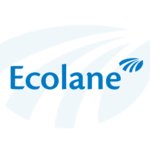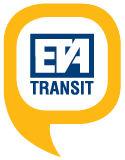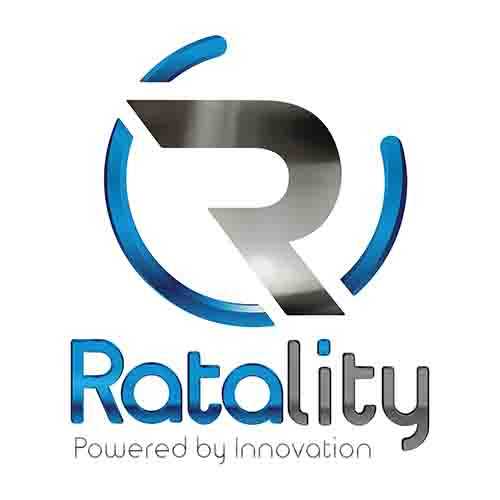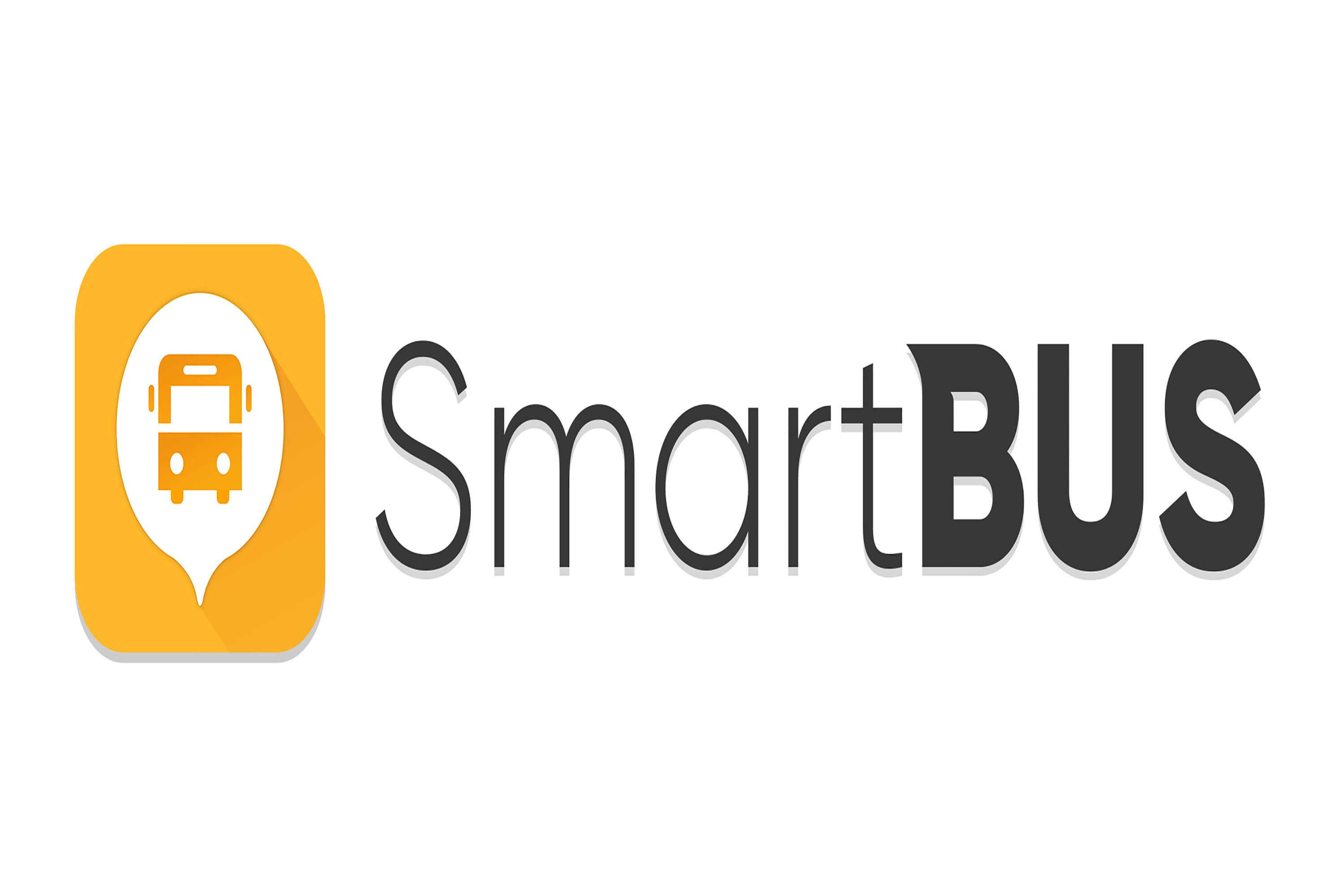Yes, public transportation software can be accessed from many devices and platforms. Most modern software solutions are web-based, which means they can be accessed via a browser on any device with an internet connection. This means that it works on all laptops, tablets, and smartphones, independent of operating system. Users can also download mobile apps for greater convenience. This flexibility enables the seamless usage and control of public transportation services while on the go.
List of Best Public Transportation Software
Optibus is a leading transportation software that revolutionizes mass transit management. With a proven track record of successful usage in over 300 cities worldwide, Optibus provides a reliable solution for optimizing routes, creating schedules, and...Read More Optibus
GPS Trackit is a fleet management solution. With real-time tracking, optimized routes, and comprehensive reporting, this tool boosts productivity and prioritizes vehicle security. Its advanced capabilities streamline operations, enhance safety, and p...Read More GPS Trackit
Ecolane DRT is a transit scheduling software that utilizes cloud technology to maximize efficiency and enhance customer satisfaction. With 24/7 live support and a wide range of resources, Ecolane DRT simplifies operations and improves the overall pas...Read More Ecolane DRT
TripSpark is a transit solution for streamlined operations and delighted passengers. Our innovative software and hardware cater to a wide range of transportation options, including fixed route, paratransit, and microtransit. With over three decades o...Read More TripSpark
AnyLogic is a simulation software that integrates system dynamics, discrete-event, and agent-based modeling. It offers a streamlined and efficient approach to projects, leading to cost and time savings in any industry. With its advanced simulation te...Read More AnyLogic
ETA Transit is a public transport software specially designed for transit industries. Our software features centralized vehicle information and real-time tracking, all from the comfort of your desk. Keep your travelers informed with easy updates and...Read More ETA Transit
Via Transportation is a transportation solution for all your needs. Its easy-to-use interface seamlessly integrates into any system, automating operations across multiple platforms. Via streamlines your transport management, freeing up your time for...Read More Via Transportation
Ratality - the leading cloud-based software tailor-made for bus, coach, charter, and vehicle rental industries. Our highly acclaimed platform offers a centralized solution for all your business needs, enhancing productivity and increasing operational...Read More Ratality
Swiftly - the unparalleled solution for effortlessly monitoring all vehicles on the road while sitting at your desk. Boasting cutting-edge public transport technology, Swiftly offers live arrival forecasts, accurate GPS locations, and the option to a...Read More Swiftly
SmartBus is the leading school bus management software that streamlines the process of tracking and managing school buses. Our advanced technology guarantees efficient and secure transportation for students, providing reassurance to school administra...Read More SmartBus
Learn More About Public Transportation Software
- What Is Public Transportation Software?
- What Are The Recent Trends In Public Transportation Software?
- Benefits Of Using Public Transportation Software
- Important Factors To Consider While Purchasing Public Transportation Software?
- What Are The Key Features To Look For In Public Transportation Software?
- Why Do Businesses Need Public Transportation Software?
- How Much Time Is Required To Implement Public Transportation Software?
- What Is The Level Of Customization Available In Public Transportation Software?
- Which Industries Can Benefit The Most From Public Transportation Software?
- Conclusion
What Is Public Transportation Software?
Public transportation software is a technological solution that helps to streamline and enhance the operations of public transportation systems like buses, trains, and subways. It consists of desktop and mobile software, as well as hardware components such as Automatic Vehicle Location (AVL) and Automated Fare Collection Systems.
The fundamental goal of public transportation software is to increase the efficiency, dependability, and safety of public transportation services. It enables transportation providers to manage and monitor their cars, routes, and timetables in real time, making it easier to respond to changing demand and unforeseen events. Some important characteristics of public transportation software include real-time vehicle tracking, passenger counts, and automated scheduling and dispatching.
These capabilities help transportation operators optimize their routes and schedules, decrease delays, and increase on-time performance. Furthermore, public transportation software allows for the integration of technologies such as contactless smart cards or mobile tickets for fare collection, making the payment process easier for passengers and removing the need for paper tickets.
Furthermore, public transportation software provides powerful data analytics capabilities, enabling transportation agencies to collect and analyze information on passenger demographics, travel patterns, and service utilization. This information can then be used to make data-driven decisions regarding service changes and enhancements.
Finally, public transportation software is critical to improving the entire passenger experience. With amenities like as real-time arrival and departure information and onboard passenger Wi-Fi, commuters may enjoy a more convenient and modern travel experience.
What Are The Recent Trends In Public Transportation Software?
In recent years, public transportation has undergone considerable technological and software developments, resulting in increased efficiency, convenience, and overall customer experience. These trends have been fueled by rising demand for sustainable and accessible transportation options, as well as the need for more cost-effective solutions for transportation authorities.
One of the most important trends in public transportation software is the utilization of real-time data and analytics. With the broad availability of GPS and other tracking technology, transit agencies can now collect and analyze massive volumes of data in real time. This allows them to reliably track their cars' location and movement, monitor passenger flow, and detect any delays or interruptions.
Another important trend is the incorporation of mobile apps into public transit systems. These apps enable users to plan trips, buy tickets, and get real-time updates on bus and rail timetables and delays. This has significantly increased the convenience and accessibility of public transit, making it more appealing to a wider spectrum of users.
In addition to improving the user experience, public transportation software is getting more sophisticated in terms of safety and security. Video surveillance and emergency communication systems have been linked into software platforms, offering additional security for passengers and transportation organizations.
Furthermore, there is an increased emphasis on developing more environmentally sustainable transportation networks. Public transportation software is intended to reduce traffic congestion and automobile emissions by optimizing routes and encouraging the use of other means of transportation, such as bike-sharing programs or ridesharing services. Another trend worth mentioning is the shift to cloud-based solutions.
This enables transit agencies to access and share data in real time, promoting collaboration and efficiency. It also allows them to scale their operations and adapt to shifting demands more readily. Overall, current advancements in public transportation software show a greater emphasis on data-driven, user-friendly, and ecologically sustainable solutions. As technology advances, we may anticipate public transit systems to become more efficient and accessible.
Benefits Of Using Public Transportation Software
Public transportation software is an invaluable resource that has transformed the management and administration of public transportation systems. Its advantages range from increased productivity and cost effectiveness to a better client experience. To make an informed purchase, a customer must first comprehend the benefits of using public transportation software.
Here are some important benefits to consider:
1. Real-Time Tracking And Monitoring: Public transportation software enables real-time vehicle tracking and monitoring, providing operators with an accurate view of their fleet at all times. This not only increases operational efficiency, but also aids in the identification and resolution of any difficulties that may develop.
2. Route Optimization: Using complex algorithms, public transportation software may evaluate traffic patterns and recommend the most efficient routes for drivers. This leads to shorter travel times, higher on-time performance, and better resource management.
3. Automated Fare Collection: The era of manual ticketing and cash handling has ended. Public transportation software includes automated fare collection systems that not only speed the procedure but also reduce the danger of fraud and error.
4. Passenger Information And Communication: Public transportation software allows operators to provide passengers with real-time information about schedules, delays, and disturbances. This helps to improve customer happiness and reduce complaints.
5. Data Analytics: Public transportation software collects and analyzes information about routes, passenger volume, and operational performance. This information can be utilized to make informed decisions, identify areas for improvement, and optimize operations.
6. Integration With Other Systems: Many public transportation software solutions provide connections with payment gateways, scheduling software, and ticketing systems. This enables a smooth flow of data and streamlines the overall management process.
Important Factors To Consider While Purchasing Public Transportation Software?
Introduction: Public transportation software is an essential instrument for controlling and optimizing operations in the transport business. Whether you run a small bus company or a huge public transportation agency, investing in the appropriate software can significantly increase productivity and customer satisfaction. However, with so many options on the market, it might be difficult to find the ideal one for your personal requirements. That is why it is critical to evaluate several key factors before making a purchase.
Let's explore, we'll go over the most important variables to consider when selecting public transportation software.
1. Scalability: One of the most important elements to consider when selecting public transportation software is scalability. Your business and operations may expand in the future, and your software should be able to accommodate such development. Make sure to select software that can handle an increase in data and users without compromising speed. This will spare you the trouble of switching to new software in the future.
2. Integration: Public transportation software should be able to work in conjunction with other systems such as ticketing, scheduling, and tracking. This ensures a smooth flow of data and streamlines your processes. Before making a purchase, determine whether the program can interact with your existing systems or provides a variety of integration possibilities.
3. Real-Time Updates: The transportation business relies heavily on real-time updates on fleet status, scheduling, and delays. Your software should be able to provide these updates in real time to ensure smooth and timely operations. Look for software that has real-time tracking and communication capabilities, allowing you to respond rapidly to changes in your operations.
4. User-Friendly Interface: Another crucial consideration when selecting public transportation software is its usability. Your staff will be utilizing the software on a daily basis, thus it is critical to select software that is simple to use and navigate. A complex and difficult-to-use program can only cause aggravation and impede your operations.
5. Customization: Each transportation company has distinct demands and operations. As a result, selecting software that can be tailored to your individual needs is critical. This will allow you to customize the software to match your needs and make the most of its features.
6. Training And Support: Investing in public transportation software also entails investing in the software company's training and support services. Make sure to choose a software vendor who provides full training and continuing assistance to help you with any issues or concerns that occur.
What Are The Key Features To Look For In Public Transportation Software?
Public transportation software is a vital component of modern transportation networks. This software enables transit agencies to run their operations more efficiently, enhance route planning, and deliver better services to passengers. With rising demand for sustainable and dependable public transportation, the market for public transportation software has grown fiercely competitive.
We will go over the essential characteristics that customers should look for when comparing various public transportation software alternatives.
1. Real-Time Tracking And Monitoring: is an important component of public transportation software. This tool enables transportation agencies to monitor their cars, assess their routes, and make any required changes to increase efficiency. Buyers should search for software that allows them to track their vehicles' locations accurately and continuously in real time. Furthermore, the program should have advanced capabilities like geofencing and automatic alerts for deviations from the scheduled itinerary.
2. Fare Collection: Another critical factor to consider is fare collection. This feature enables transportation agencies to collect fares digitally, decreasing the need for cash and giving commuters with a more convenient experience. Buyers should seek for software that accepts numerous payment methods, including mobile ticketing, contactless cards, and internet purchases. It should also be able to handle fare calculations, validations, and discounts correctly and effectively.
3. Intuitive Scheduling And Planning: Effective route planning and scheduling are critical for providing commuters with dependable and timely service. Buyers should therefore opt for software that provides straightforward scheduling and planning tools. The program should be capable of optimizing routes, managing trip assignments, and taking into account traffic patterns, peak hours, and transfer links. In addition, it should be able to change schedules in real time in response to unanticipated events such as road closures or service outages.
4. Passenger Information System: A passenger information system is an important component that keeps commuters updated on the status of their travel. It should give real-time information on arrival and departure timings, service disruptions, and route changes. Buyers should seek for software that provides many methods of disseminating information, such as on-board displays, smartphone apps, and social media platforms. The system should also be multilingual and allow for real-time communication with transit operators.
5. Data Analytics And Reporting: To improve and optimize operations, transit agencies require accurate data and reports. Buyers should therefore select software that provides comprehensive data analytics and reporting features. This includes the ability to monitor key performance metrics, analyze rider data, and generate reports for a variety of purposes, including budget planning and service review. The software should also have a simple user interface that enables for quick data customization and visualization.
Why Do Businesses Need Public Transportation Software?
Public transportation software is a valuable resource for enterprises of all sizes. It enables businesses to efficiently and effectively manage their transportation operations, resulting in better efficiency, cost savings, and more customer satisfaction.
Here are the main reasons firms require public transportation software:
1. Streamlined Operations: Public transportation software simplifies the process of planning, scheduling, and managing transportation routes. This saves time and effort on manual route planning, resulting in a more streamlined and effective transportation operation.
2. Cost Savings: Businesses can use public transportation software to optimize their routes and schedules, saving money on fuel, labor, and vehicle maintenance. It also reduces the risk of human error, lowering the possibility of additional costs.
3. Real-Time Tracking: Public transportation software enables firms to monitor their vehicles and shipments in real time. This allows them to monitor their fleets and make adjustments to ensure on-time delivery, which is critical for achieving consumer expectations.
4. Data Analysis: Public transportation software collects useful information such as delivery times, routes, and vehicle performance, which may then be used to identify areas for improvement. This enables firms to make data-driven decisions that improve their transportation operations and, eventually, raise their bottom line.
5. Customer Happiness: By properly managing transportation operations, firms can ensure timely and reliable delivery, resulting in higher customer happiness. Businesses can improve customer communication by tracking shipments and providing precise delivery predictions, resulting in a better customer experience.
How Much Time Is Required To Implement Public Transportation Software?
The time required to implement public transportation software varies depending on the software utilized and the complexity of the transit system. However, on average, the implementation phase can take six months to a year. The first stage in deploying public transportation software is to undertake a comprehensive needs assessment.
This includes assessing the transit system's current pain points and issues, as well as the software implementation goals and objectives. Next, the software vendor will collaborate with the transportation agency to create a tailored solution that matches their specific requirements. This may include teaching employees on how to use the software, configuring data, and integrating it with current systems.
Once the software has been configured, it will be tested to confirm that it is working properly and meets all of the requirements. This could take weeks or months, depending on the software's complexity. Finally, the program will be disseminated out throughout the transit system. This can take a few weeks or even months because it requires personnel training and onboarding, as well as ensuring a smooth transfer from the prior system.
So, the total implementation time for public transportation software can range from six months to a year. However, this time span may vary based on the transit system's specific requirements and the complexity of the program. Transit authorities must collaborate closely with the software vendor to ensure that the installation process runs smoothly and efficiently.
What Is The Level Of Customization Available In Public Transportation Software?
Public transportation software provides a wide range of customization possibilities to meet the individual needs of various transportation bodies. With technological advancements, these software applications have grown into a highly adaptive and configurable system for controlling public transit. The level of customisation available in public transportation software varies based on the software supplier and the individual capabilities offered.
However, most software solutions offer customization options for route planning, scheduling, ticketing, and real-time tracking. Route planning is an important component of public transportation management, and transportation authorities can use configurable software to design routes that are tailored to the demands of their unique location. This includes the ability to add, alter, or delete routes, as well as change the stop locations and time intervals.
Scheduling is another important feature of transportation software that may be tailored to the frequency and demand of a certain route. This allows authorities to manage their timetables for optimal efficiency and improved service to their passengers. Ticketing is a crucial component of public transportation software, and it can be customized to meet the unique requirements of various transit systems.
This comprises various ticket kinds, tariff structures, and payment mechanisms, such as contactless payments and smartphone ticketing. Furthermore, real-time tracking is an essential aspect of modern transportation software, and it can be tailored to meet the specific needs of individual transportation systems. This includes the ability to monitor cars in real time, track their location and speed, and receive notifications about any delays or disturbances.
Which Industries Can Benefit The Most From Public Transportation Software?
The emergence of Public Transportation Software transformed the public transportation business due to technological advancements. This technology has shown to be a game changer in a variety of industries, increasing efficiency, lowering costs, and improving the customer experience.
Let's look at the industries that will benefit the most from deploying public transportation software.
1. Municipalities And Transportation Authorities: Public transportation software can assist municipalities and transportation authorities in streamlining operations and increasing overall efficiency. It can provide real-time data and insights, helping them to better optimize routes, scheduling, and resource management. It can also help save costs while boosting passenger safety and security.
2. Transportation And Logistics Companies: Public Transportation Software can be extremely beneficial to transportation and logistics businesses. It can help companies manage their fleet more effectively, optimize delivery routes, and monitor real-time traffic conditions. This leads to better productivity, lower operational costs, and shorter delivery times, which ultimately improves customer happiness.
3. Corporate Organizations: Large corporations frequently provide their own shuttle services for employees. Route planning, real-time tracking, and automatic payments are all characteristics of public transportation software that can help them handle these shuttle operations more efficiently. This can lead to a more convenient and seamless commute for employees.
4. Educational Institutions: Public Transportation Software might be useful in educational institutions such as universities and schools. It can assist them manage student transportation by providing bus scheduling, tracking, and real-time information to parents. This can improve student safety and provide parents peace of mind.
5. Event Management Companies: Organizing huge events may be logistically difficult, particularly when it comes to transportation for participants. Public Transportation Software can help event management organizations handle transportation arrangements by providing features such as shuttle route planning, real-time tracking, and automated ticketing. This can result in a more seamless and structured event experience for attendees.
Conclusion
Finally, investing in reliable public transportation software can benefit both transportation businesses and their customers. With features like real-time tracking, automatic ticketing, and effective route planning, transportation enterprises can run more smoothly and efficiently while giving commuters with a seamless and easy experience.
When selecting public transportation software, it is critical to evaluate your company's specific demands and objectives. Conduct careful study and compare many possibilities to discover the best solution for your budget and needs. Furthermore, prioritize elements that improve the entire user experience, such as user-friendly interfaces and easy accessibility.
It is also critical to select software that integrates effortlessly with your current systems and enables for future scalability to support your company's expansion. Finally, don't underestimate the value of dependable customer service and regular software updates from the provider. This ensures that any technical issues are resolved quickly and that the software is up to date with the most recent innovations in the transportation business.
Keeping these aspects in mind and following our complete buyer's guide will help you select the best public transportation software for your company's productivity and customer happiness.
Public Transportation Software FAQ's
Can Public Transportation Software Be Accessed Across Multiple Devices And Platforms?
Is Public Transportation Software Future-Proof And Adaptable To Emerging Technologies Like AI, Blockchain Or IoT?
Yes, public transportation software is meant to be future-proof and adaptable to emerging technologies such as artificial intelligence, blockchain, and the Internet of Things. As technology advances, public transportation systems must adapt to meet the changing needs of passengers and cities.
Many public transportation software systems currently include these technologies, making them well-prepared for future advances. This guarantees that the software remains efficient, user-friendly, and affordable, benefiting both passengers and transportation authorities.
Is There A Free Trial Offered To Assess Public Transportation Software Before Committing?
Yes, many public transportation software suppliers provide free trials so that users can evaluate the product before making a purchase. This lets you to evaluate the software's features, interface, and overall functionality to see if they match your unique requirements. Make use of the free trial time to make an informed choice regarding the program and its suitability for your transportation operations.
Does Public Transportation Software Offer Data Security Features And Meet Regulatory Compliance Standards?
Yes, most public transportation software includes robust data security safeguards and meets regulatory requirements. This includes encrypting critical data, performing regular backups, and implementing secure user authentication mechanisms. Furthermore, trustworthy software vendors verify that their systems comply with rules like GDPR, PCI DSS, and HIPAA. This ensures the security and privacy of passenger information while also assisting transit providers in being legally compliant.
Can Public Transportation Software Integrate Seamlessly With Existing Tools And Platforms?
Yes, most public transportation software is designed to work easily alongside existing tools and platforms. This provides a smooth transition and effective administration of all transportation activities. The program is easily integrated with ticketing systems, passenger information displays, and real-time tracking systems, resulting in a comprehensive transportation management solution.
Furthermore, these software solutions have adaptable APIs and interoperability with many operating systems, making it simple to combine with existing tools and platforms. This allows transportation authorities to streamline processes and increase overall efficiency.












